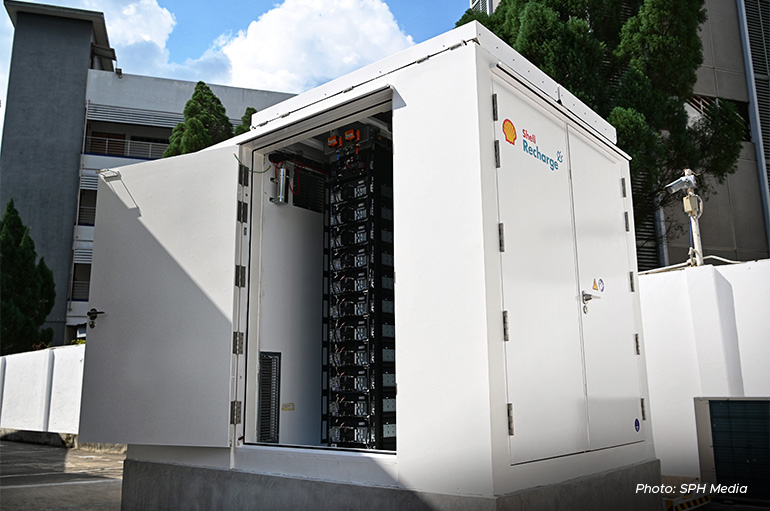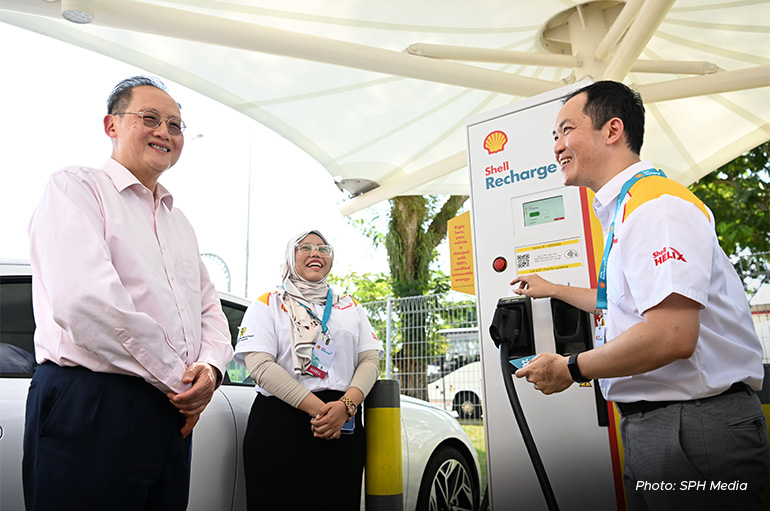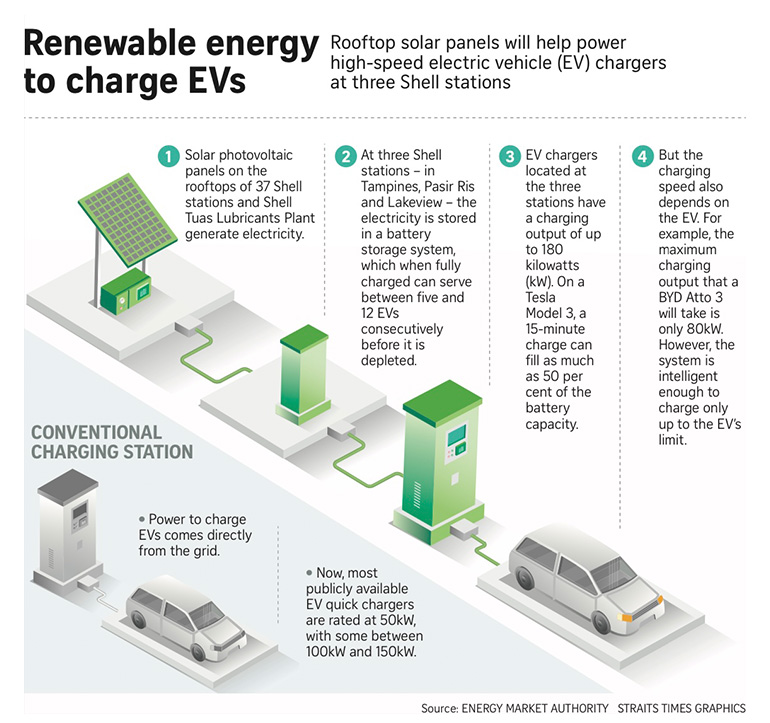Shell has rolled out electric vehicle (EV) chargers at three stations that can charge as much as 50 per cent of the battery on a Hyundai Ioniq 5 in around 15 minutes.
Rated at up to 180 kilowatts (kW), these new EV chargers – located at service stations in Tampines, Pasir Ris and Lakeview – are the fastest publicly available chargers in Singapore.
Shell on Monday said they are more than three times faster than the 50kW chargers it has at other stations. The next-quickest ones are rated at up to 150kW at SPC Bukit Batok, provided by SP Mobility.
Speaking at the launch at Shell’s Lakeview station, Second Minister for Trade and Industry Tan See Leng said that while overnight slow charging is likely to be the most common charging mode here, fast charging is a useful complement that facilitates charging on the go.
Shell’s fast chargers make EVs a more attractive option for drivers, he said, adding that the launch is a “meaningful milestone in Singapore’s journey towards a sustainable and smart energy future”.











